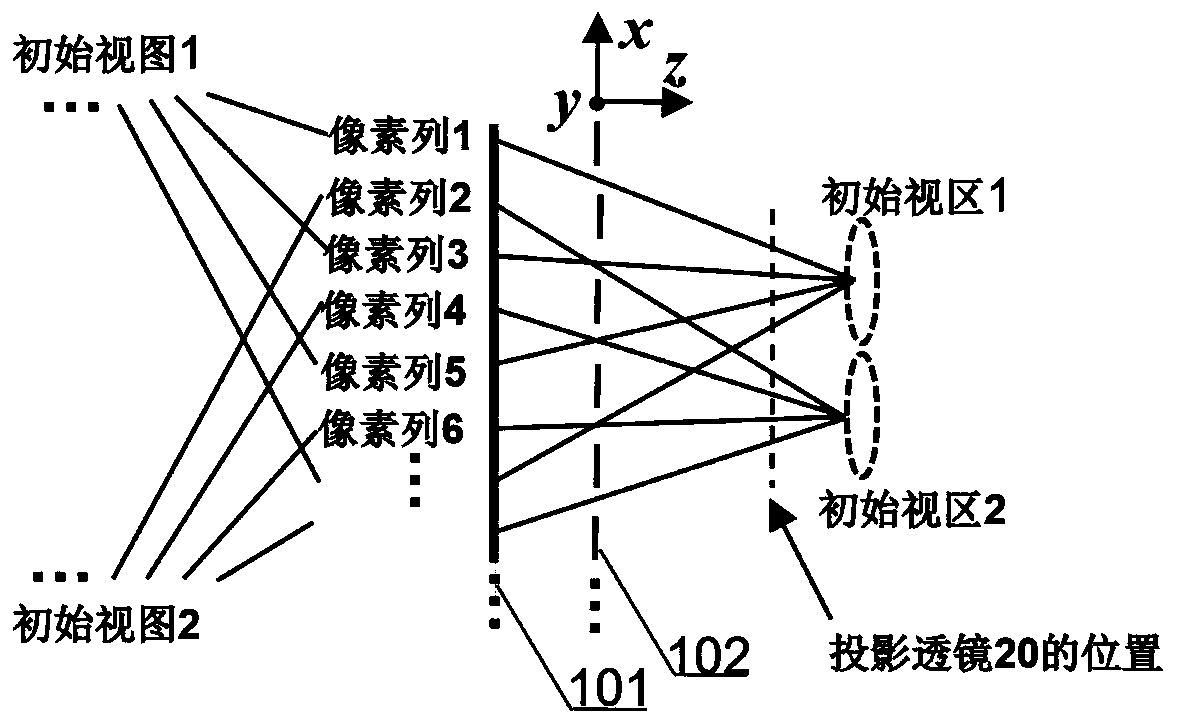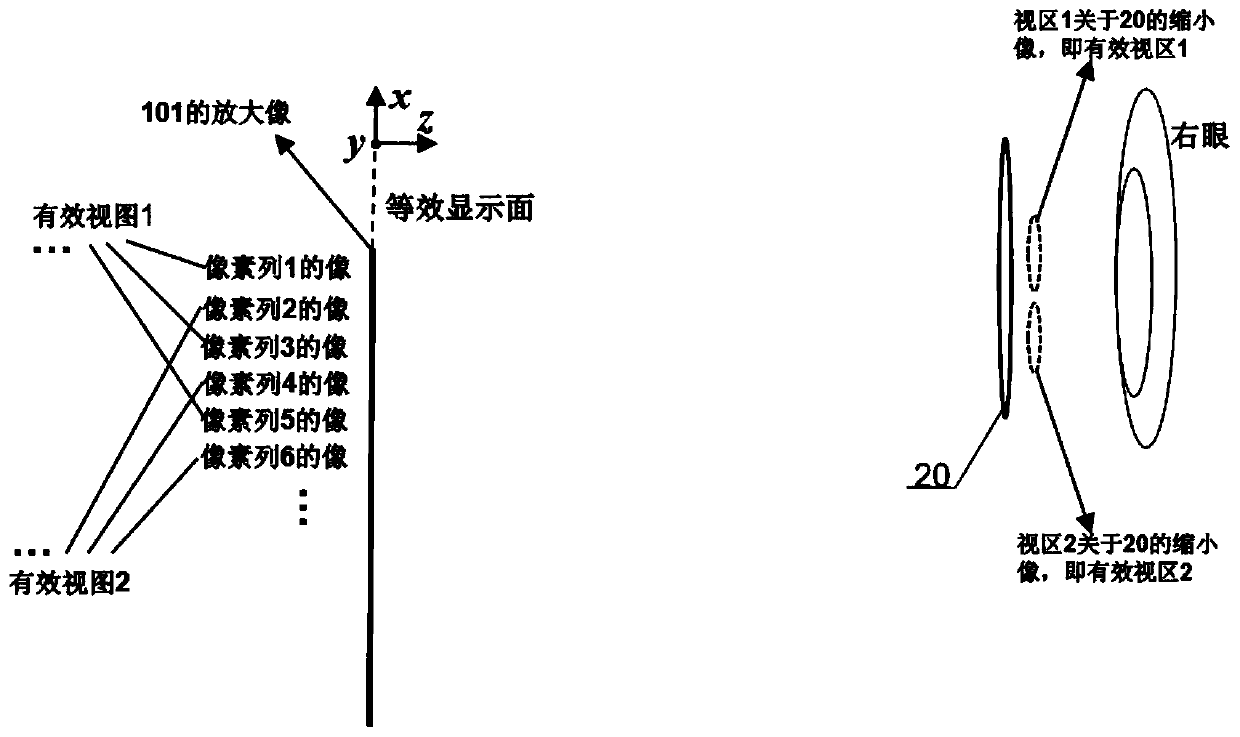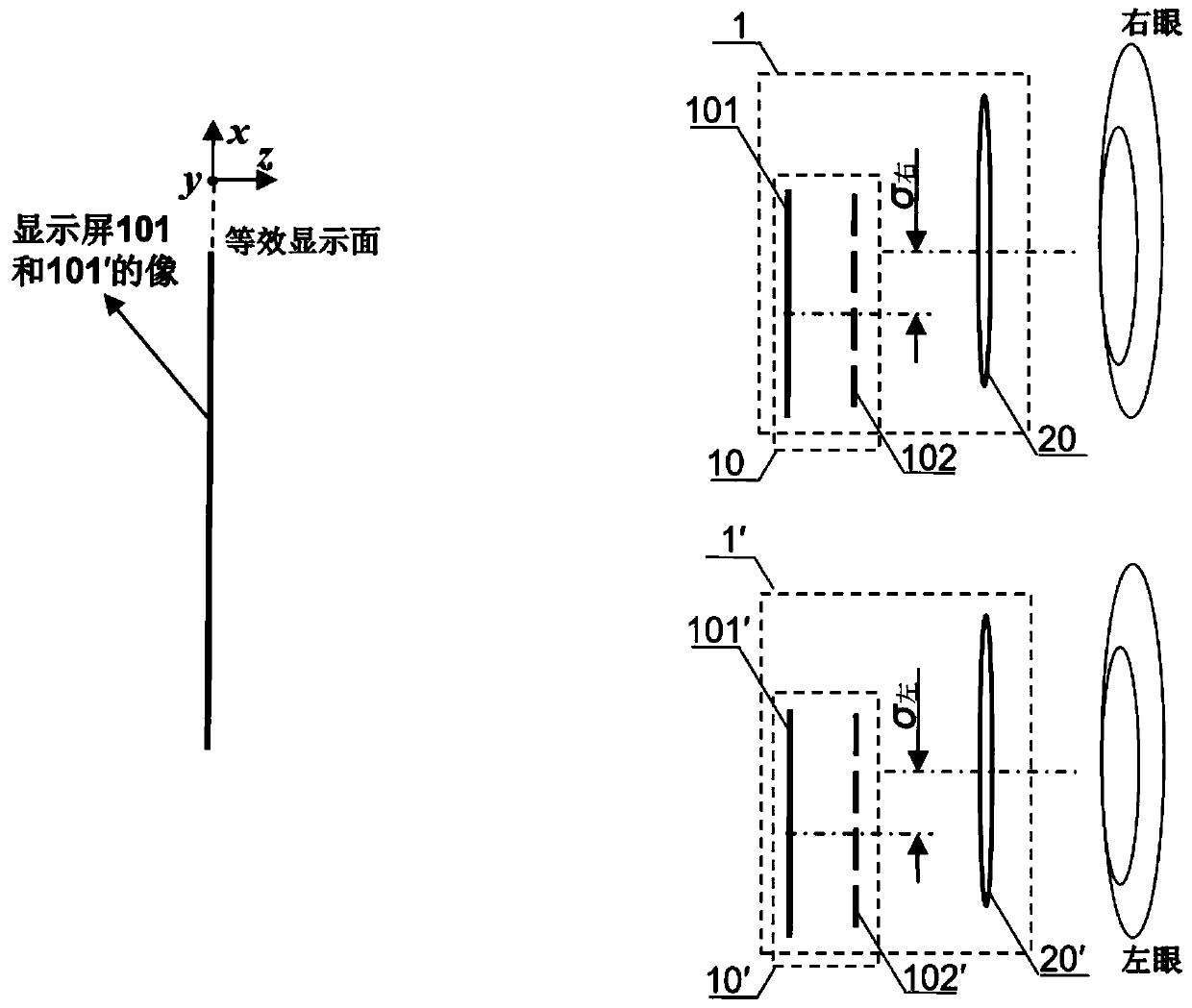Monocular multi-view three-dimensional display method
A three-dimensional display, multi-view technology, applied in image communication, optics, instruments, etc., can solve problems such as focus-convergence conflicts
- Summary
- Abstract
- Description
- Claims
- Application Information
AI Technical Summary
Problems solved by technology
Method used
Image
Examples
Embodiment 1
[0035] A three-dimensional display method for monocular multi-view, which needs to select a display unit 10 capable of generating k≥2 views (defined as initial views), and each initial view is visualized through a corresponding view area (defined as initial view area) . Taking k=2 as an example, the schematic diagram of its structure is as follows figure 1 (a) shown. Then set the projection lens 20 between the initial view and the initial viewing area, such as figure 1 (b) A magnified image and a reduced image are respectively formed for the initial view and the corresponding initial view area, and the two images are respectively defined as the effective view and the corresponding effective view area. Specifically, a display unit composed of a display screen 101 and a grating 102 attached thereto is used as an example for illustration, as figure 2 . After the light is split by the grating 102, the initial view displayed by the pixels in the odd columns on the display scre...
Embodiment 2
[0042] A single-eye multi-view three-dimensional display method, which selects a display screen 101" with k converging lights time-sequentially cyclically incident as the display unit 10". Such as Figure 6 As shown, simply take k=2 incident converging light as an example for illustration. The k=2 incident converging lights are respectively converged on the initial viewing area 1 and the initial viewing area 2, and are incident on the display screen 101 ″ at adjacent time points t and t+Δt, and the corresponding two initial viewing areas figure 1 and initial view figure 2 The display is refreshed synchronously. Then set the projection lens 20 between the initial view and the initial viewing area, such as Figure 7 , forming a magnified image and a reduced image for the initial view and the corresponding initial view area respectively, and the two images are respectively defined as an effective view and a corresponding effective view area, wherein the effective view is the ...
Embodiment 3
[0049] A single-eye multi-view three-dimensional display method selects the display screen 101"' where each pixel emits a directional light beam as the display unit 10"'. Simply take the formation of k=2 initial viewing areas as an example. Each pixel on the display screen 101"' has its own independent outgoing direction. both point to the initial viewport 2, such as Figure 8 shown. Then the odd column pixels load the initial view figure 1 Visible through the initial viewing area 1, even-numbered columns of pixels load the initial viewing area figure 2 Visible through initial viewport 2. Then, a projection lens 20 "' is placed between the display screen 101"' carrying the initial view and the initial viewing area, and the former becomes a magnified image, and the rear becomes a reduced image, such as Figure 9 shown. The display unit 10"' and the projection lens 20"' form a multi-view projection unit. The magnified image of the display screen 101"' is projected onto an...
PUM
 Login to View More
Login to View More Abstract
Description
Claims
Application Information
 Login to View More
Login to View More - R&D
- Intellectual Property
- Life Sciences
- Materials
- Tech Scout
- Unparalleled Data Quality
- Higher Quality Content
- 60% Fewer Hallucinations
Browse by: Latest US Patents, China's latest patents, Technical Efficacy Thesaurus, Application Domain, Technology Topic, Popular Technical Reports.
© 2025 PatSnap. All rights reserved.Legal|Privacy policy|Modern Slavery Act Transparency Statement|Sitemap|About US| Contact US: help@patsnap.com



